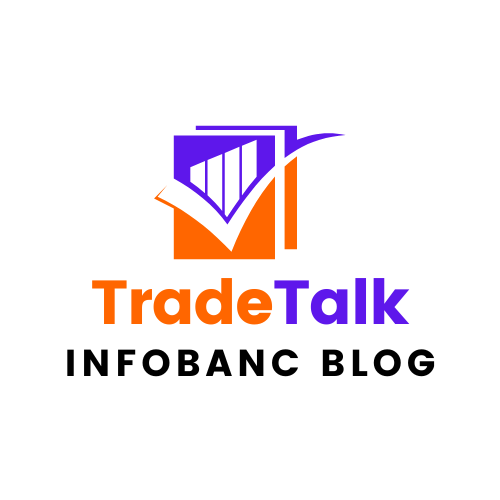In today’s globalized economy, sourcing products from overseas markets has become a standard practice for businesses of all sizes. Whether you’re a small retailer looking to expand your product range or a large corporation seeking cost-effective manufacturing solutions, understanding the nuances of international sourcing is crucial. This comprehensive buyer’s guide provides best practices, helpful tips, and real-life examples to help you navigate the complexities of sourcing from overseas markets.
Understanding the Basics of Overseas Sourcing
Sourcing from overseas markets involves purchasing goods or services from suppliers located in different countries. The primary reasons businesses opt for overseas sourcing include cost savings, access to unique products, and the ability to scale quickly. However, it also comes with its set of challenges, such as cultural differences, language barriers, and logistics management.
Key Considerations Before You Begin
- Product Quality and Standards: Ensure that the products meet the quality standards required by your market. This might involve conducting factory inspections or requesting samples before placing a large order.
- Regulatory Compliance: Be aware of the import regulations in your country, including tariffs, customs duties, and product certifications. Failure to comply with these regulations can result in costly delays or fines.
- Supplier Reliability: Choosing a reliable supplier is critical. Research potential suppliers thoroughly, check their reputation, and consider visiting their facilities if possible.
- Cost Analysis: While sourcing from overseas can be cost-effective, it’s important to factor in all costs, including shipping, customs duties, and potential currency fluctuations.
Best Practices for Overseas Sourcing
1. Conduct Thorough Market Research
Before selecting a supplier, conduct comprehensive market research to identify the best sourcing locations for your products. Different countries specialize in different industries. For example, China is known for electronics and textiles, while Vietnam has become a hub for furniture manufacturing. By understanding the strengths of various markets, you can make informed decisions that align with your business needs.
Example: A U.S.-based furniture retailer decided to source its products from Vietnam due to the country’s expertise in woodcraft and competitive pricing. By conducting thorough research, the company was able to find a supplier that met their quality standards and offered significant cost savings compared to domestic manufacturers.
2. Build Strong Relationships with Suppliers
Building strong relationships with your suppliers is key to successful overseas sourcing. Good relationships can lead to better pricing, more favorable payment terms, and a stronger commitment to meeting your quality and delivery expectations. Regular communication, transparency, and mutual respect are the cornerstones of a strong supplier relationship.
Tip: Consider scheduling regular video calls with your suppliers to discuss production schedules, quality control, and any potential issues. This not only helps in maintaining transparency but also builds trust over time.
3. Prioritize Quality Control and Inspections
Quality control is a critical aspect of overseas sourcing. Implementing a robust quality control process ensures that the products you receive meet your standards and are free from defects. This can involve third-party inspections, factory audits, and pre-shipment checks.
Case Study: A European fashion brand faced significant losses due to poor-quality garments received from an overseas supplier. To prevent future issues, the brand implemented a stringent quality control process, including random inspections at various stages of production. This helped in identifying defects early and reducing the risk of receiving substandard products.
4. Understand and Mitigate Risks
Sourcing from overseas markets comes with risks, including geopolitical instability, currency fluctuations, and shipping delays. It’s essential to identify these risks early and develop strategies to mitigate them.
Risk Mitigation Strategies:
- Diversify Suppliers: Avoid relying on a single supplier or country for your products. Diversifying your supplier base can reduce the impact of disruptions in any one region.
- Hedge Currency Risks: Use forward contracts or options to lock in exchange rates and protect your business from currency fluctuations.
- Insure Shipments: Purchase insurance for your shipments to cover losses due to damage, theft, or other unforeseen events during transit.
5. Leverage Technology for Efficient Sourcing
Technology plays a crucial role in modern overseas sourcing. From online marketplaces to supplier management software, leveraging the right tools can streamline your sourcing process, improve communication, and enhance decision-making.
Helpful Tools:
- Alibaba and Global Sources: These online platforms provide access to a vast network of suppliers across various industries, making it easier to find and compare options.
- Supply Chain Management Software: Tools like SAP Ariba and Oracle SCM Cloud help in managing supplier relationships, tracking orders, and optimizing the supply chain.
Example: A mid-sized electronics company used SAP Ariba to manage its supplier network, track shipments, and automate procurement processes. This resulted in improved efficiency, reduced errors, and faster decision-making.
Common Challenges in Overseas Sourcing and How to Overcome Them
1. Cultural Differences and Communication Barriers
One of the most common challenges in overseas sourcing is navigating cultural differences and communication barriers. Misunderstandings can lead to delays, quality issues, and strained relationships with suppliers.
Solution: Invest in cultural training for your team and consider hiring local intermediaries or translators who understand the language and cultural nuances of the supplier’s country. This can help bridge communication gaps and ensure smoother interactions.
Case Study: A Canadian automotive parts importer faced challenges in communicating technical specifications to a Chinese supplier. By hiring a local agent who was fluent in both languages and familiar with the industry, the company was able to resolve the communication issues and improve the quality of the products received.
2. Navigating Complex Logistics and Shipping
Logistics is another significant challenge in overseas sourcing. Managing international shipping, customs clearance, and delivery schedules requires careful planning and coordination.
Solution: Work with experienced freight forwarders and logistics providers who can handle the complexities of international shipping. Ensure that you have clear agreements on shipping terms, delivery schedules, and responsibilities for customs clearance.
Tip: Consider using Incoterms (International Commercial Terms) to define the responsibilities of buyers and sellers in the logistics process. This can help avoid misunderstandings and disputes.
Real-Life Examples of Successful Overseas Sourcing
Example 1: Walmart’s Global Sourcing Strategy
Walmart, one of the world’s largest retailers, has a highly effective global sourcing strategy. The company sources products from over 100 countries, leveraging its vast network of suppliers to offer low prices to customers. Walmart’s success in overseas sourcing is attributed to its strong supplier relationships, rigorous quality control, and use of technology to streamline its supply chain.
Example 2: IKEA’s Sustainable Sourcing
IKEA is known for its commitment to sustainability, and this extends to its overseas sourcing practices. The company works closely with suppliers in countries like India and Vietnam to source sustainable materials for its products. By focusing on ethical sourcing and long-term supplier partnerships, IKEA ensures that its products meet high environmental and social standards while remaining cost-competitive.
Helpful Tips for First-Time Buyers
If you’re new to overseas sourcing, here are some practical tips to help you get started:
- Start Small: Begin with smaller orders to test the waters and build trust with your suppliers. This allows you to assess the quality and reliability of the supplier before committing to larger orders.
- Visit Trade Shows: Attending international trade shows is an excellent way to meet potential suppliers, see their products firsthand, and negotiate deals in person.
- Request Samples: Always request product samples before placing a large order. This gives you an opportunity to evaluate the quality and make necessary adjustments to your specifications.
- Use a Letter of Credit: A letter of credit provides financial security by ensuring that the payment is only made when the supplier fulfills the terms of the contract.
- Stay Updated on Regulations: Keep yourself informed about changes in import/export regulations in both your country and the supplier’s country. This can help you avoid compliance issues and ensure smooth transactions.
Conclusion
Sourcing from overseas markets offers immense opportunities for businesses looking to expand their product range, reduce costs, and stay competitive. However, it requires careful planning, thorough research, and strategic execution. By following the best practices outlined in this guide, you can navigate the complexities of international sourcing and build successful, long-term partnerships with overseas suppliers.
Whether you’re a seasoned importer or a first-time buyer, staying informed and proactive is the key to success in overseas sourcing. Keep these tips in mind as you embark on your sourcing journey, and you’ll be well-equipped to achieve your business goals.
Call to Action
Ready to start sourcing from overseas markets? Subscribe to our blog for more expert advice, practical tips, and success stories from businesses that have mastered the art of international sourcing.
List of overseas buyers and Trade Leads


